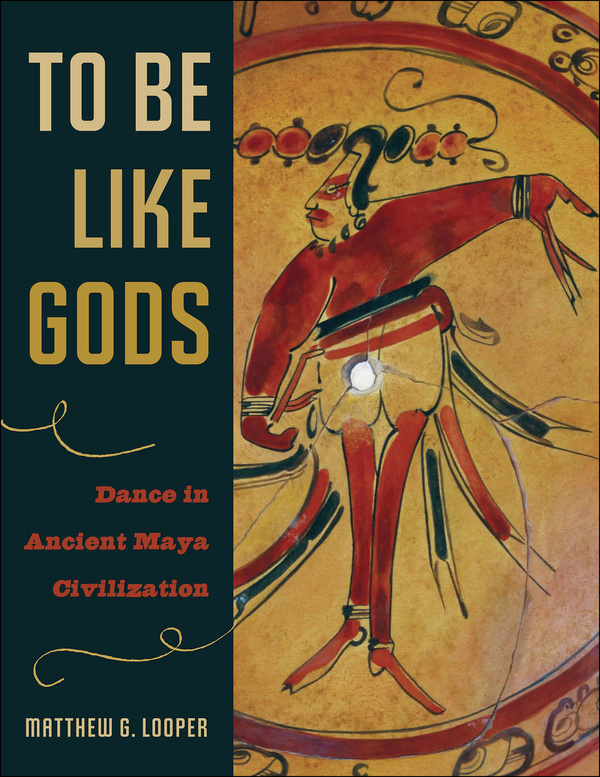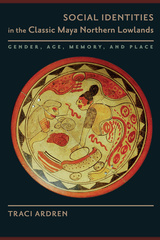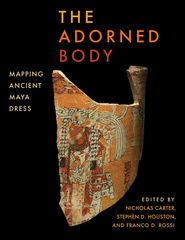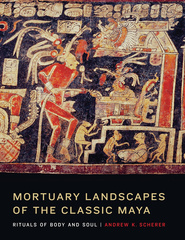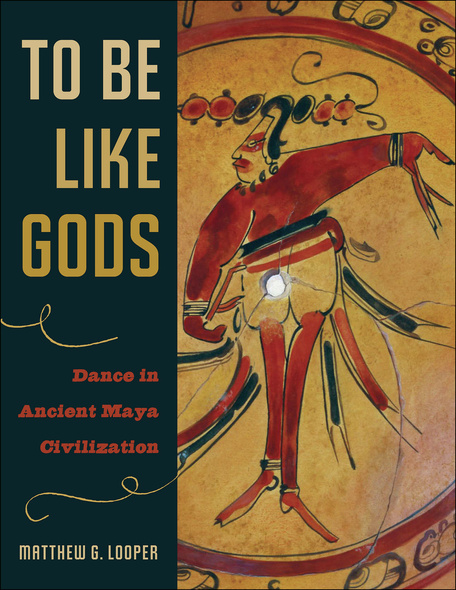
Winner, Association for Latin American Art Book Award, 2010
The Maya of Mexico and Central America have performed ritual dances for more than two millennia. Dance is still an essential component of religious experience today, serving as a medium for communication with the supernatural. During the Late Classic period (AD 600-900), dance assumed additional importance in Maya royal courts through an association with feasting and gift exchange. These performances allowed rulers to forge political alliances and demonstrate their control of trade in luxury goods. The aesthetic values embodied in these performances were closely tied to Maya social structure, expressing notions of gender, rank, and status. Dance was thus not simply entertainment, but was fundamental to ancient Maya notions of social, religious, and political identity.
Using an innovative interdisciplinary approach, Matthew Looper examines several types of data relevant to ancient Maya dance, including hieroglyphic texts, pictorial images in diverse media, and architecture. A series of case studies illustrates the application of various analytical methodologies and offers interpretations of the form, meaning, and social significance of dance performance. Although the nuances of movement in Maya dances are impossible to recover, Looper demonstrates that a wealth of other data survives which allows a detailed consideration of many aspects of performance. To Be Like Gods thus provides the first comprehensive interpretation of the role of dance in ancient Maya society and also serves as a model for comparative research in the archaeology of performance.
Matthew G. Looper is a Professor in the Department of Art and Art History at California State University, Chico. His publications include Lightning Warrior: Maya Art and Kingship at Quirigua.
- Acknowledgments
- Introduction: The Definition and Interpretation of Ancient Maya Dance
- Definitions of Dance
- History of Maya Dance Studies
- Aesthetics and Embodiment
- Sources and Methods
- Chapter 1: The Textual Record of Dance
- Decipherment of Dance Texts
- The Contexts of T516 "Dance" Expressions
- Case Study 1: Dos Pilas
- Case Study 2: Yaxchilán
- Conclusions
- Chapter 2: The Iconography of Dance
- Identifying Dance Iconography
- Case Study: Dance in the Bonampak Murals
- Conclusions
- Chapter 3: Dance Poses and Gestures
- The Study of Body Positions in Maya Art
- Dance Poses
- Problematic Poses
- From Pose to Gesture: Reconstructing Dance Movement from Figural Images
- Case Study: Narrative and Avian Dances
- Conclusions
- Chapter 4: Dance on Classic Maya Ceramics
- by Matthew Looper, Dorie Reents-Budet, and Ronald L. Bishop
- Case Study 1: Dances of the Maize God
- Case Study 2: The Ik'-Style Corpus of Pictorial Cylinder Vessels
- Conclusions
- Chapter 5: The Architectural Settings of Dance
- Case Study 1: Dance Platforms at Copán and the Yucatán
- Case Study 2: Temple and Palace Dances in Campeche
- Conclusions
- Chapter 6: The Persistence of Maya Dance After European Contact
- Characteristics of Colonial and Modern Maya Dance
- Case Study: The Patzkar
- Conclusions
- Epilogue: Dance as an Image of Civilization
- Dance as an Image of Divinity
- Dance as an Image of Society
- Dance as an Image of the State
- Aesthetics as Image and Process
- Dance in Ancient Maya History
- Appendix: T516 "Dance" Expressions Ordered by Date
- Notes
- Bibliography
- Index

